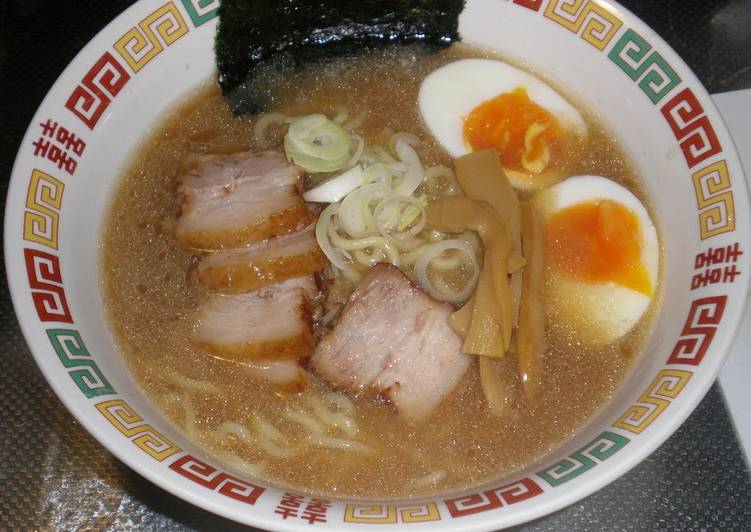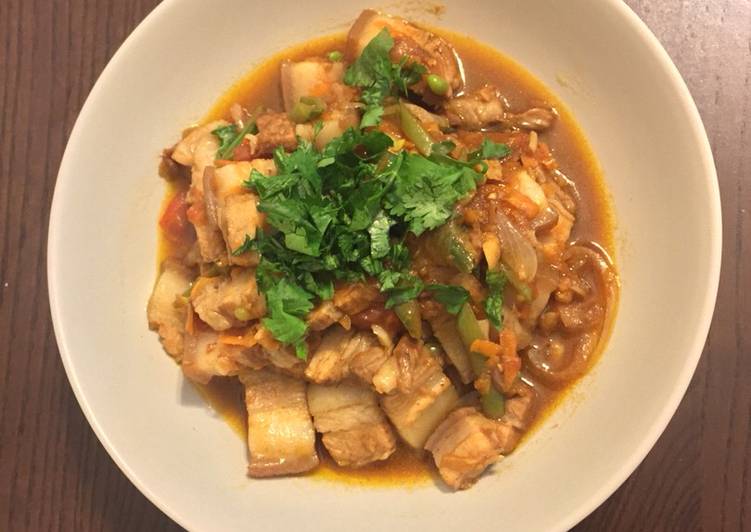Here is how Homemade Tonkotsu Ramen Broth and Noodles from Scratch may also help you in weight loss
Weight administration needs fixed efforts. If you are somebody attempting to shed some further kilos then you'll want to all the time be in your toes. Watching your calorie intake and in addition sticking to a balanced weight loss plan is the secret to an efficient weight reduction routine. It becomes really hectic to strike that right balance between taste and health and subsequently, we need to find an in-between resolution where taste meets well being.
Don’t fear it is not tough in any respect. You just need to choose the fitting elements. Like Proteins! As you already must be figuring out, protein is the building block of cell and is chargeable for repairing the damaged tissues and muscle tissue. It's also a super-powerful nutrient that helps in inducing satiety and stimulates weight reduction. Due to this fact, consuming a high-protein diet will provide help to in shedding weight effectively

Before you jump to Homemade Tonkotsu Ramen Broth and Noodles from Scratch recipe, you may want to read this short interesting healthy tips about Some Foods That Are Good For Your Heart.
You already realize that the body needs a heart that is strong and healthy. Obviously, if your heart is in bad shape then the rest of you isn’t going to be healthy either. You already know that daily exercise and a healthy lifestyle are imperative in terms of the overall health of your heart. Still, did you know that there are some foods that have been discovered to help you improve your heart health? Go on reading to learn which foods are beneficial for your heart.
Believe it or not, beans are so effective for your heart health. Sure, the after-effects of eating beans might not be the best for your nose, but they are so healthy for you. This does not mean, though, that simply eating beans will make your heart be a lot healthier or counteract the effects of unhealthy foods you might be eating. What we are saying is that subbing in beans or edamame for the chicken on your green salad or eating a soy burger in place of a beef hamburger is a superb idea. Thankfully, beans have a very good taste and you never know, you may prefer them to your beefburgers and chicken.
There are plenty of foods you will find that that are terrific for your body. The truth is that all the foods that we’ve talked about here can help your body in a variety of ways. They are essentially great, though, for helping you keep your heart healthy. Try introducing these healthy foods into your diet daily. Your heart will thank you!
We hope you got benefit from reading it, now let’s go back to homemade tonkotsu ramen broth and noodles from scratch recipe. You can cook homemade tonkotsu ramen broth and noodles from scratch using 19 ingredients and 25 steps. Here is how you cook it.
The ingredients needed to cook Homemade Tonkotsu Ramen Broth and Noodles from Scratch:
- Get Soup
- Take 5 bones Pork on the bone
- Use 2 Japanese leek
- Prepare 2 medium Onions
- Get 1 tsp Grated ginger (tube is fine)
- Use 1 tsp Grated garlic (tube is fine)
- Use 100 grams Pork fatback
- Prepare 1 enough to fill a large pot Water
- Prepare Noodles
- Take 500 grams All-purpose (medium) flour
- Take 1 -5 1/2 grams Powdered kansui (alkaline minerals)
- Provide 200 ml Water
- Provide 1 for dusting Katakuriko
- Prepare Char siu (Chinese-style roasted pork)
- Get 500 grams Thinly sliced pork belly
- You need 50 ml Soy sauce
- You need 50 ml Mirin
- You need 1 tbsp Sugar
- Get 500 ml Water
Steps to make Homemade Tonkotsu Ramen Broth and Noodles from Scratch:
- I got these pork bones at the supermarket (they were being sold for about 15-30 yen per 100 g in my neighborhood). I think about 5 bones come out to 3 kg.
- Wash off the blood under running water. Place the bones in a large pot of cold water. Bring the pot to a boil (at this point, the bones will be giving off a very strong odor, but don't worry).
- A lot of scum will come to the surface. Scoop it out diligently (I know this part is a bit off-putting, but stick with it. It'll turn out okay).
- Strain in a colander and remove the remaining blood from the bones with a scrubbing brush.
- Use a saw to make a slice in middle of the bones, and a hammer to break them in half. (It's easier if you make an incision before snapping them).
- Look at all the bone marrow inside the bones. We'll be melting it out by simmering these bones over a long period of time.
- Now start to add the other ingredients for the soup. Diligently remove the scum that rises to the top. Keep the heat at medium and maintain a gentle boil.
- Once the scum has been removed, simmer the broth for another 6 hours. Add more water if it boils off.
- Next we'll be preparing the noodles. Measure out the ingredients and mix the flour and powdered kansui together. Add the water. It'll feel like a very small amount of water, but don't worry.
- Mix the ingredients until the dough starts to clump together in the bowl.
- The dough is a pretty tough one, so be careful not to hurt your wrists. Try mixing it with the weight of your body.
- Move the dough to a working surface and knead. Don't worry too much about cracks or inconsistencies yet. Just knead for about 10 minutes.
- Round up into a ball, wrap with plastic cling wrap, and let sit in the refrigerator (for at least 30 minutes. Then check if the dough has settled).
- Prepare the char siu in the meantime. Brown the meat in a frying pan, and simmer for 2 hours in a pot with the combined seasoning ingredients. Let cool in the pot.
- Once the dough has become moist, roll out to a thickness of 5 mm. Use a pasta machine to even it out to your desired thickness.
- If you don't have a pasta machine, just use a rolling pin to stretch out the dough (but remember that the dough will thicken up about 1.3 times, so include that in your calculations).
- You can manage with just a little bit of dusting flour (katakuriko or bread flour) since the dough isn't that sticky.
- Apparently a wooden box is best for storing Chinese noodles, but if you don't have one on hand, just transfer them to a tray lined with parchment paper. Insert tray in a plastic bag and keep cool in the refrigerator.
- About two hours after simmering the broth, it'll start to get white and cloudy. I wouldn't taste testing it just yet, since it'll still be somewhat smelly.
- Here's what the broth should look like after 6 hours of simmering. The marrow has melted out of the bones, which have emptied out. The soup now looks quite rich and smells like it should (just like what you get a ramen joint).
- The char siu should have become a caramel brown. Take care not to break it apart when you're slicing the meat, since it'll be quite soft at this point.
- Enjoy the leftovers with a cold beer!
- Now that you have everything prepared, get ready to make your ramen. Boil each serving of noodles separately and adjust the times carefully by watching over them. If you'd like your noodles rippled, squeeze the noodles once and fluff them out again before boiling.
- Warm up the bowl you'll be using for the ramen. Add the simmering sauce you used for the char siu and season with some salt (starting on the lighter side so the taste is easier to adjust) and pour in the pork broth you prepared earlier.
- The boiling time for the noodles should be about 1:30-2 minutes, but this is something you can change according to your preferences. Once you add your noodles to the soup and garnish with your desired toppings, your rich and creamy tonkotsu ramen is complete.
If you find this Homemade Tonkotsu Ramen Broth and Noodles from Scratch recipe helpful please share it to your close friends or family, thank you and good luck.

